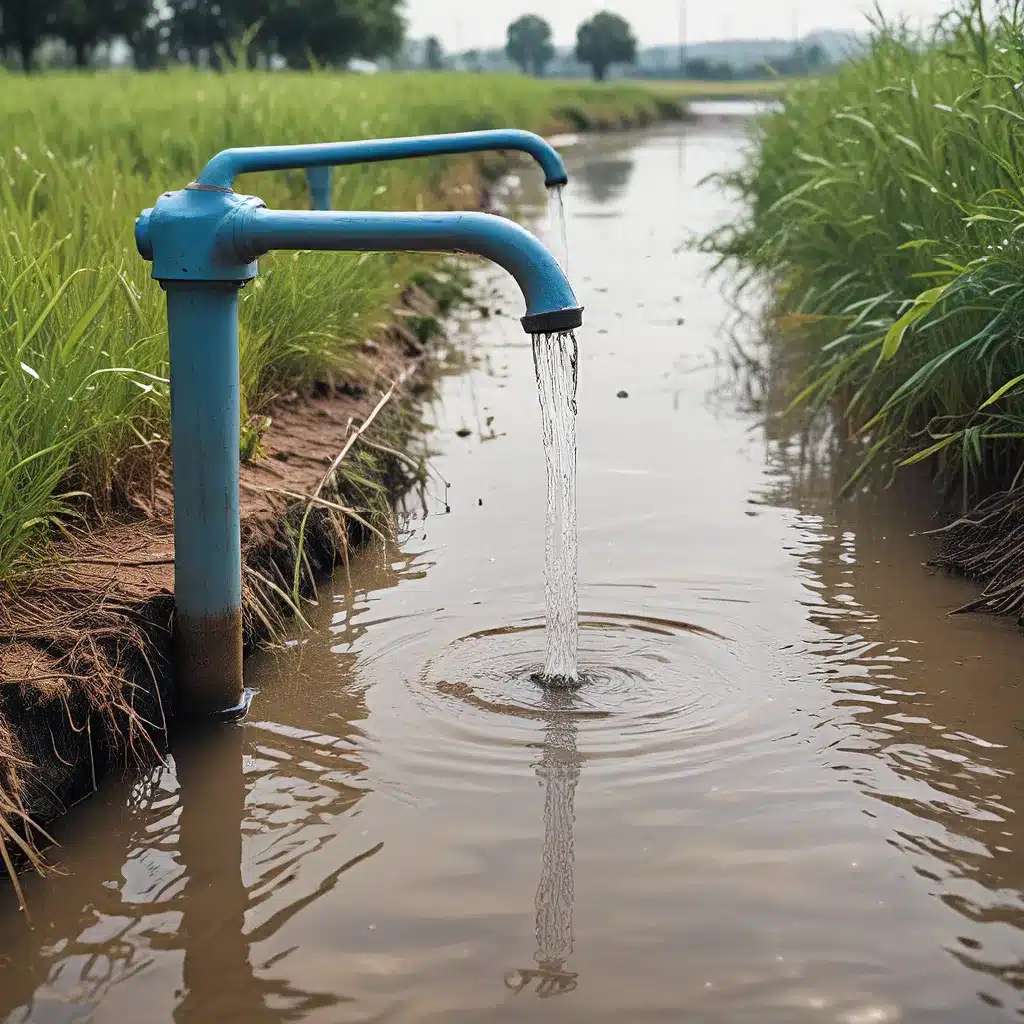
Diving into the Data Deluge: A Water Manager’s Tale
As a water manager, I’ve witnessed the industry undergo a remarkable transformation in recent years. Gone are the days when our decisions were based solely on gut instinct and historical data. Today, we find ourselves awash in a veritable ocean of information, courtesy of the ever-evolving world of Big Data and advanced analytics.
Recent research has revealed that while the water and wastewater industry has been collecting significant amounts of data, we’ve been rather slow to embrace the full potential of Big Data analytics. It seems we’ve fallen behind our counterparts in other sectors, who have been quick to harness the power of these cutting-edge tools.
Embracing the Digital Dawn: Challenges and Opportunities
As I delve deeper into this data-driven transformation, I can’t help but wonder: what’s holding us back? Is it a lingering “wait and see” mentality, a fear of the unknown, or simply a lack of understanding?
One of the key challenges we face is the issue of data quality. The research indicates that while we’re amassing vast troves of data, the lack of consistency and reliability often hampers our ability to fully leverage it. Integrating disparate systems and ensuring data integrity has become a pressing concern.
But with challenge comes opportunity. By embracing Big Data and advanced analytics, we have the chance to revolutionize the way we manage our water resources. Imagine being able to predict and prevent infrastructure failures, optimize energy consumption, and enhance overall operational efficiency. The possibilities are truly staggering.
Innovating Beyond Boundaries: Lessons from Other Industries
As I ponder the future of water management, I can’t help but wonder what we can learn from our counterparts in other industries. Recent research has highlighted the remarkable strides made by sectors like healthcare, logistics, and manufacturing in harnessing the power of Big Data.
Take the healthcare industry, for example. By integrating patient data, genomic information, and real-time monitoring, they’ve been able to develop predictive models that revolutionize disease prevention and treatment. Couldn’t we apply similar strategies to water quality monitoring and early warning systems?
And in the logistics sector, companies have used Big Data analytics to optimize route planning, reduce fuel consumption, and enhance supply chain efficiency. Might we be able to leverage these techniques to optimize our water distribution networks, minimizing waste and ensuring reliable delivery?
The possibilities are endless, and the key lies in our willingness to step outside our industry silos and explore innovative solutions.
Embracing the Big Data Bonanza: Strategies for Water Managers
As I ponder the road ahead, I can’t help but feel a sense of excitement and anticipation. The water industry is poised to undergo a profound transformation, and Big Data and advanced analytics will be the driving forces behind it.
So, where do we begin? Here are a few strategies that water managers can consider:
-
Invest in Data Infrastructure: Ensure that your utility has the necessary hardware, software, and data management capabilities to collect, store, and analyze large volumes of data. This may require upgrading legacy systems and adopting cloud-based solutions.
-
Foster a Data-Driven Culture: Encourage your team to embrace a data-centric mindset. Provide training, resources, and incentives to help employees understand the value of data and develop the skills to harness its power.
-
Collaborate and Innovate: Reach out to other water utilities, research organizations, and technology providers to share best practices and explore collaborative opportunities. Research projects focused on developing innovative predictive control strategies for nutrient removal could provide valuable insights.
-
Embrace Pilot Projects: Start small by testing data-driven solutions in controlled environments. This will help you identify the most promising approaches and refine your strategies before large-scale implementation.
-
Leverage External Expertise: Don’t be afraid to partner with data scientists, analytics firms, and industry experts who can provide the specialized knowledge and tools you may need to make the most of your data.
By adopting these strategies, water managers can position their utilities for a future where Big Data and advanced analytics are the cornerstones of efficient, sustainable, and responsive water management.
Navigating the Data Frontier: A Promising, Yet Uncertain, Path
As I reflect on the transformative potential of Big Data and analytics in the water industry, I’m struck by a mix of excitement and cautious optimism. The path forward is undoubtedly promising, but it is also fraught with uncertainty.
After all, the water sector is a complex and highly regulated environment, where the consequences of missteps can be severe. We must tread carefully, test our assumptions, and be willing to adapt as new evidence emerges.
Inland Waters Inc., the water treatment and environmental services company I work for, has been exploring these uncharted waters with a keen eye on innovation and sustainability. We’ve seen firsthand the power of data-driven decision-making, but we also recognize the need for a measured, thoughtful approach.
As we continue to navigate this data frontier, I’m reminded of the wise words of one of our industry’s leading experts: “The water sector is undergoing a transformation to digital, where data and data management are driving every aspect of a utility’s work.” It’s a future that is both exciting and daunting, but one that we must embrace if we are to ensure the long-term viability of our most precious resource.
So, let’s dive in, armed with curiosity, creativity, and a willingness to learn. The future of water management is ours to shape, and the time to act is now.


